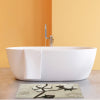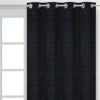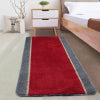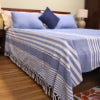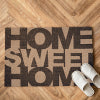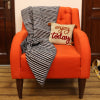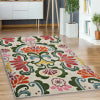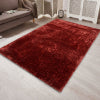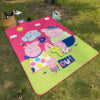Different Types Of Bed Sheets - Which Material is Best?
Posted by AMIT KUMAR
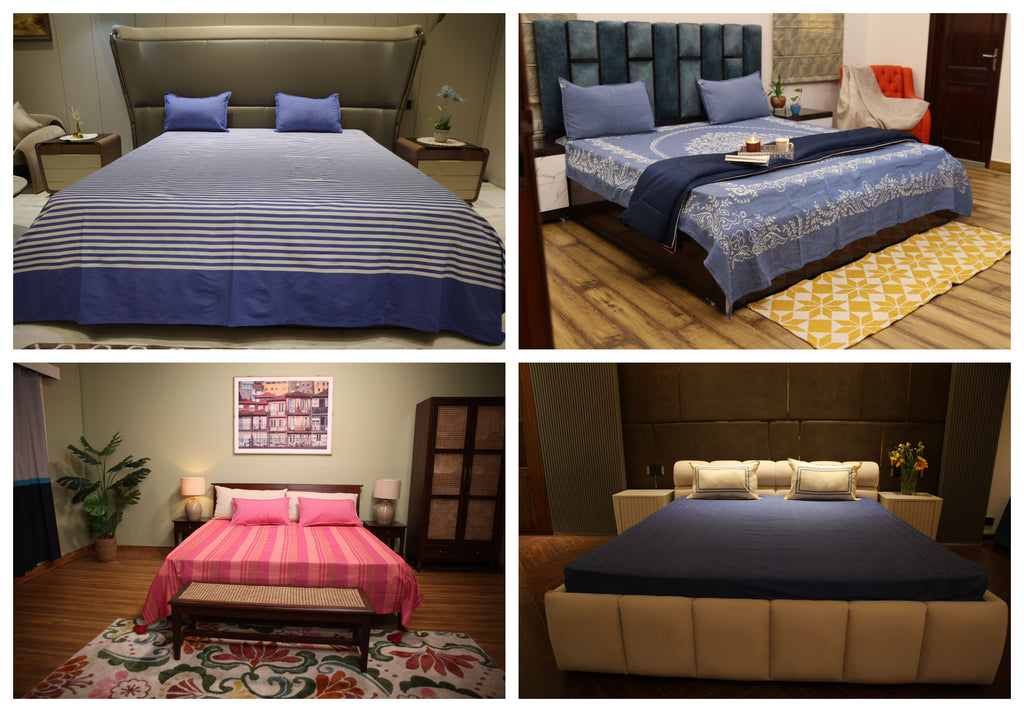
Choosing the right bedsheet that matches the aesthetics and style of your room can be difficult sometimes. With so many options available, people sometimes buy the wrong products unknowingly. These mistakes happen if you don’t have the correct knowledge about the material used in bedsheets. To help you make the right choice and buy the right bedsheet this comprehensive guide might come in handy. Refer to this guide before buying your favorite bedsheets.
Types of Bedsheets
The most common types of sheets include Cotton, Bamboo, Tence, Satin, Polyester, Microfiber, Silk, Linen. In addition to material, it’s important to consider factors such as weave, thread count, and feel.
Cotton Bedsheet
Cotton Bedsheets are made from natural cotton fabric that lets air flow freely. This airflow helps manage your body temperature, adding more comfort. As a natural fiber, cotton is hypoallergenic. Compared to man-made materials, it does not irritate skin or produce allergies. Plus, maintenance of cotton sheets is simple. Cotton bed sheets are available in a variety of colors, patterns, and thread counts, making them super adaptable and popular among everyone.
Cotton bedsheets are practical and popular. They've got breathability and can wick away moisture. Plus, they're soft, strong, and have hypoallergenic properties. Washing them is very easy. All you need is a washing machine and a dryer.
Bamboo Bedsheet
Bamboo bed sheets are also a comfortable and eco-friendly variety of bedsheets. Just like cotton, they have natural, highly breathable fibers. Bamboo sheets allow airflow. They wick away sweat, keeping your body cool and dry. These sheets are soft but can last regular use and washing. They are very durable.
Bamboo bed sheets strike a great balance: they're cozy and kind to the environment. They are kind of similar to cotton. They have breathable natural fibers that allow air in. Perfect for controlling your body temperature and maintaining dry comfort. This bedsheet is the best when it comes to softness. These bed sheets are very tough and can stand up to repeated washes and use.
As a hypoallergenic material, bamboo is less likely to cause allergic reactions in people with sensitive skin. The natural fibers make a comfy bed.
Satin Bedsheet
Satin bedsheets feel smooth, silky, and comfy to the touch. They are created from silk or man-made fibers, woven tightly. This weaving helps manage temperatures. It keeps heat in when it's cold and circulates air when it's warm. That's why they're perfect for any season.
Satin sheets are known for their durability. They resist pilling, fraying, and wrinkles. They keep their lustrous appearance. With proper care, it will last longer.
You may find satin to be the best option due to its beautiful texture and it can be used for any season.
Polyester Bedsheet
Polyester bed sheets offer several practical benefits that make them a popular choice. They are highly durable and resistant to shrinking, fading, and wrinkling. Thus ensuring a long-lasting appearance. Polyester bedsheets are also easy to care for. They can be machine-washed and dried without significant effort.
Polyester wicks away moisture. This helps keep you dry and comfortable at night. Additionally, polyester sheets are often more affordable than natural fibers. This makes them a budget-friendly option for those seeking quality bedding.
Polyester sheets come in many colors, patterns, and styles. They let you find options that match your taste and bedroom decor.
Linen Bedsheet
Flax plant fibers are used to make Linen . This material lets air move freely and wicks sweat off your skin. It ensures you stay cool and relaxed throughout the night.
One of the standout features of linen sheets is their exceptional durability . Linen fibers are very strong. They are also resistant to pilling and tearing. This means the sheets can last for years of regular use and washing.
Linen also has a distinctive texture and a slightly rough feel. It becomes softer with each wash, adding to its charm and character. Also, linen is hypoallergenic. Linen Bedsheets are a great choice for those with sensitive skin or allergies.
Tencel Bedsheet
Tencel, a byproduct of natural wood pulp, is both eco-friendly and breathable. It's structured to let air move freely. That way, it keeps you comfortable and cool throughout the night.
One of the standout features of Tencel bedsheets is their incredible softness. The fibers are smooth and silky. They are also durable.
Tencel sheets boast ease of maintenance and a strong defense against wrinkles. A little bit of care keeps them fresh for a long duration. Due to their hypoallergenic qualities, they are good for sensitive skin. Thus these bedsheets are recommended for people having allergies and skin sensitivities.
Silk Bedsheet
Silk bedsheets provide a truly peaceful and comfortable sleep. Silk comes from silkworm cocoons. Silk is a natural, airy material promoting good airflow. Hence, it assures a cool and cozy sleep during the night.
Silk bed sheets are known for their softness and smooth texture. The fibers have a shiny look and feel silky-smooth against the skin. Silk sheets are comfy. They are also tough and wrinkle-resistant. This means they stay beautiful with care.
People with allergies or skin issues should go for silk. They're hypoallergenic and easy on sensitive skin too. Silk bedsheets regulate temperature naturally. They keep you warm in cool months and cool in warm weather. This promotes a comfy sleep environment year-round.
Microfiber Bedsheet
Microfiber is a synthetic material made from extremely fine fibers. It has a soft and smooth texture that mimics the feel of expensive natural fibers.
Microfiber bedsheets have a key advantage. They are durable and resist pilling, fading, and wrinkles. They also resist stains well. This makes them easy to care for and keep looking fresh with little effort.
Microfiber sheets are light but warm. They provide a cozy sleep without too much heat.
How to choose Bedsheets based on Thread Count?
Thread count is the count of threads in a fabric's square inch. This count is often used to assess the quality and softness of bed sheets.
Based on thread counts we can classify bedsheets into different types:
Basic Quality : When the linen has a thread count of 132 to 144.
Good Quality : The linen has a thread count of 180 to 220 .
Great Quality : When the fabric has a thread count beyond 300.
Excellent Quality : The linen has a thread count beyond 400.
Meanwhile, the best thread count for bedding comes in beyond 500. High thread counts above 800-1,000 doesn’t mean that the bedsheet is soft. Extremely high thread counts above 1,200 can result in thinner, less durable threads, thus reducing their life.
The best way to evaluate sheets is by feeling them in person.
How to Choose the Right Bedsheets?
Based on Thread Count
Bed sheets with higher thread count are softer whereas bedsheets with lower thread count might be low in quality. In the end, while choosing bedsheets, feel the bedsheets to identify their softness and comfort.Based on the type of fabric
The fabric you choose for bed linens directly impacts your experience. Natural fibers like cotton, bamboo, silk, and linen differ greatly from synthetics like microfiber and polyester in factors such as softness, temperature regulation, and durability. Please read the material attributes written above. The right fabric makes all the difference.Chemical or not
When selecting bed linens, it's important to evaluate the printing and dyeing process. Opt for chemical-free options to ensure the material doesn't irritate sensitive skin. Additionally, consider how the fabric type and weave impact breathability. Some materials, like cotton and linen, allow more airflow to keep you cool. Tighter weaves tend to trap heat. Analyzing these factors helps you find bedding that regulates temperature comfortably against your skin for better sleep.Ultimately your unique style, likes, and selections dictate your choices. This guide has served to clarify the attributes of various bedsheet materials and their usefulness. As a result, with this newfound understanding, you will make an informed choice when purchasing bedsheets as you are now armed with knowledge about different bedsheet materials.


































